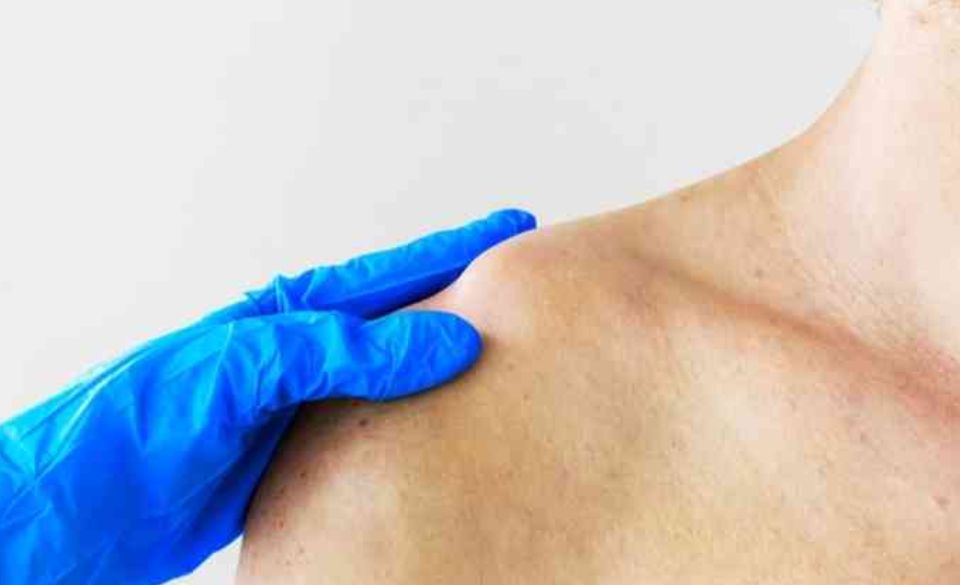
Running After A Broken Clavicle (Collar Bone): Fracture Repair
Page Contents
- The Recovery Rollercoaster
- Consult the Experts
- Getting the Green Light
- Gradual Return to Glory
- Rehab Exercises
- Listen to Your Body
- Equip Yourself Right
- Celebrate Small Wins
- Nutrition as Your Ally
- Patience is a Virtue
- Vary Your Routine
- A Support System Matters
- Keep the Spirits High
- Final Check-In with the Pros
- Frequently Asked Questions (FAQ)
- Final Words – Running After A Broken Clavicle (Collar Bone)
Recovering from a broken clavicle and dreaming of lacing up those running shoes? Let’s navigate the journey to post-fracture fitness with a smile and a plan.
The Recovery Rollercoaster
The broken clavicle recovery process resembles a rollercoaster. Initially, discomfort, swelling, and limited mobility are common. However, with time, patience, and proper care, your collarbone can regain strength and flexibility.
Consult the Experts
Before contemplating running, consult healthcare professionals. They’ll assess the fracture’s severity, monitor healing progress, and provide guidance on when it’s safe to resume physical activities.
1.2 Taking Baby Steps
Avoid rushing the comeback. Initiate with low-impact exercises like gentle walks. Gradual progression minimizes the risk of re-injury, allowing your body to adjust.
Getting the Green Light
Before sprinting off, consult your healthcare pro. Ensure the fracture has healed adequately and receive the official thumbs-up for a running reunion.
2.1 Radiant Rays of Recovery
Sunlight exposure aids initial healing. Vitamin D, produced in response to sunlight, plays a crucial role in bone health.
2.2 Sling Wisdom
During early healing, a sling provides crucial support. Follow healthcare provider advice on its duration, as proper support aids recovery.
Gradual Return to Glory
No need to break speed records on day one. Start with low-impact exercises like brisk walks or stationary cycling, easing back into the rhythm.
3.1 Respect the Healing Clock
Every bone heals at its own pace. Listen to your body and respect its unique healing clock. Patience is key.
3.2 Strengthening Exercises
Rehab exercises are post-fracture workout buddies, targeting specific muscles to enhance overall strength and stability around the collarbone.
Rehab Exercises
Rehabilitation exercises are new workout buddies. They enhance flexibility, strength, and overall collarbone resilience. Follow the prescribed plan diligently.
4.1 Engage in Eccentric Movements
Eccentric exercises, where muscles lengthen under tension, benefit rehabilitation. They aid muscle strengthening without excessive stress on the healing bone.
4.2 Balance and Stability
Rehab isn’t just about strength; it’s about balance and stability. Exercises challenging balance can improve coordination and reduce the risk of future injuries.
Listen to Your Body
If a move feels uncomfortable or painful, back off. Gradually increase intensity based on how your collarbone responds.
5.1 Avoid Overdoing It
Enthusiasm is great, but overdoing it can hinder recovery. Pay attention to pain signals and consult your healthcare provider if discomfort persists.
5.2 Rest and Recovery
Adequate rest is as important as exercises. Your body needs time to recover and rebuild, especially after a bone injury.
Equip Yourself Right
Invest in supportive gear like a comfortable sling for the initial healing phase. Proper support aids recovery and reduces stress on the mended bone.
6.1 Choose the Right Footwear
Opt for running shoes with good support and cushioning, reducing impact on your collarbone during each stride.
6.2 Consider a Collarbone Brace
For added support during the early stages of running, a collarbone brace can provide stability and minimize excessive movement.
Celebrate Small Wins
Each pain-free stride is a victory. Celebrate progress, no matter how small, reinforcing your commitment to recovery.
7.1 Track Your Progress
Keep a record of workouts, milestones, and how your collarbone feels. Reflection boosts motivation and progress reinforcement.
7.2 Positive Affirmations
Remind yourself of strength, resilience, and progress in your journey back to running through powerful affirmations.
Nutrition as Your Ally
A balanced diet rich in calcium and vitamin D supports bone health. Consider consulting a nutritionist for tailored advice.
8.1 Calcium-Rich Foods
Incorporate dairy, leafy greens, and fortified products into your diet. Calcium is crucial for bone repair and maintenance.
8.2 Vitamin D Boost
Sunlight and foods like fatty fish and egg yolks are sources of vitamin D, aiding calcium absorption.
Patience is a Virtue
Healing takes time. Be patient, avoiding rushing the process. Rome wasn’t built in a day, and neither is a fully recovered collarbone.
9.1 Mind-Body Connection
Acknowledge the interconnectedness of physical and mental well-being. Embrace the healing journey with a calm mind.
9.2 Yoga and Mindfulness
Activities like yoga and mindfulness complement recovery, promoting relaxation, reducing stress, and contributing to overall well-being.
Vary Your Routine
Explore different forms of exercise. Mix in strength training, yoga, or swimming to maintain overall fitness while giving your collarbone some variety.
10.1 Cross-Training Benefits
Engaging in cross-training adds variety and prevents overuse injuries, keeping your body adaptable and resilient.
10.2 Adapting to Your Comfort Zone
Find activities that feel comfortable and enjoyable. Variety keeps workouts interesting and encourages consistent participation.
A Support System Matters
Share your comeback journey with friends or join a running group. Emotional support can be as vital as physical support during recovery.
11.1 Socialize Through Fitness
Join a local running club or fitness class for a supportive community. Shared experiences and encouragement boost motivation.
11.2 Communication is Key
Keep those around you informed about recovery goals. Effective communication ensures understanding and encouragement.
Keep the Spirits High
Maintain a positive outlook. Visualize your triumphant return to running, letting enthusiasm propel you forward.
12.1 Visualization Techniques
Picture yourself running effortlessly. Visualization enhances motivation and creates a positive mindset.
12.2 Positive Reinforcement
Surround yourself with positivity, whether quotes, stories, or messages. Let positivity be a constant companion.
Final Check-In with the Pros
Before going full throttle, have a final check-in with your healthcare team. Ensure they’re on board with your running goals and offer any last-minute advice.
13.1 Medical Guidance
Healthcare teams provide invaluable guidance for a safe return to running. Their understanding of your medical history is crucial.
13.2 Monitoring Long-Term Health
Periodic check-ups ensure collarbone and overall health are in check. Early detection of any issues allows timely intervention.
Frequently Asked Questions (FAQ)
Can you workout after a broken collarbone?
Yes, you can resume working out after a broken collarbone, but it is crucial to follow medical advice and guidelines. The timeline for returning to exercise will depend on the severity of the fracture, the type of treatment received, and the individual’s healing progress. Generally, low-impact exercises that do not strain the collarbone, such as walking or stationary cycling, may be recommended initially. As healing progresses, gradual reintroduction of more strenuous activities, including weight training or running, can be considered under medical supervision.
Can a broken collarbone cause problems later in life?
While a broken collarbone typically heals well, especially with appropriate medical attention, there is a potential for long-term issues. Complications such as lingering pain, limited range of motion, or differences in shoulder height may occur. It is essential to follow the prescribed rehabilitation exercises, attend follow-up appointments, and consult with healthcare professionals if any concerns arise. In most cases, with proper care, individuals can regain functionality, and the long-term impact on life is minimized.
What not to do after clavicle fracture?
After a clavicle (collarbone) fracture, it’s crucial to avoid activities or behaviors that could impede the healing process or exacerbate the injury. Some key things to avoid include:
– Overexertion: Refrain from engaging in strenuous activities or exercises without medical approval.
– Ignoring Pain Signals: Pay attention to pain and discomfort; if an activity causes pain, it may not be suitable during the healing phase.
– Neglecting Rehabilitation Exercises: Follow prescribed rehabilitation exercises to promote proper healing and restore shoulder function.
– Neglecting Medical Advice: Always consult with healthcare professionals regarding activity levels, rehabilitation, and the overall recovery plan.
Does a broken collarbone heal completely?
In many cases, a broken collarbone can heal completely with proper medical care and rehabilitation. The majority of fractures respond well to conservative treatments, such as immobilization with a sling, physical therapy, and pain management. Surgical intervention may be necessary for severe fractures or cases where the bones do not align correctly. The healing process can take several weeks, and following medical advice, including rehabilitation exercises, is crucial to achieving the best possible outcome. While some individuals may experience residual effects, such as mild discomfort or differences in shoulder strength, many can regain full functionality over time.
Do broken collar bones grow back stronger?
A broken collarbone, or clavicle, can heal and regain strength, but the notion that it grows back “stronger” is not entirely accurate. The healing process involves the formation of new bone tissue to reconnect the broken ends. In many cases, with proper medical care, rehabilitation, and adherence to prescribed exercises, individuals can regain full functionality and strength in the affected collarbone.
During the healing phase, the body forms a callus around the fracture site, and over time, this callus remodels into more organized bone tissue. While the healed bone can be as strong as the original, factors such as the severity of the fracture, the effectiveness of the treatment, and individual healing responses can influence the outcome.
It’s essential to follow healthcare professionals’ guidance regarding rehabilitation exercises and any restrictions on activities during the recovery period. Engaging in proper exercises helps in strengthening the surrounding muscles and promoting stability, contributing to the overall strength and functionality of the collarbone.
Final Words – Running After A Broken Clavicle (Collar Bone)
Before going full throttle, your final check-in with healthcare professionals ensures a safe return to running. Their guidance and understanding of your medical history play a vital role in ensuring the long-term health of your collarbone.
In conclusion, your journey from a broken clavicle to the prospect of running again is not just about physical recovery; it’s a mental triumph. With care, patience, and an optimistic spirit, you are not just back on the road but cruising through those miles, leaving the fracture firmly in the rearview mirror.

